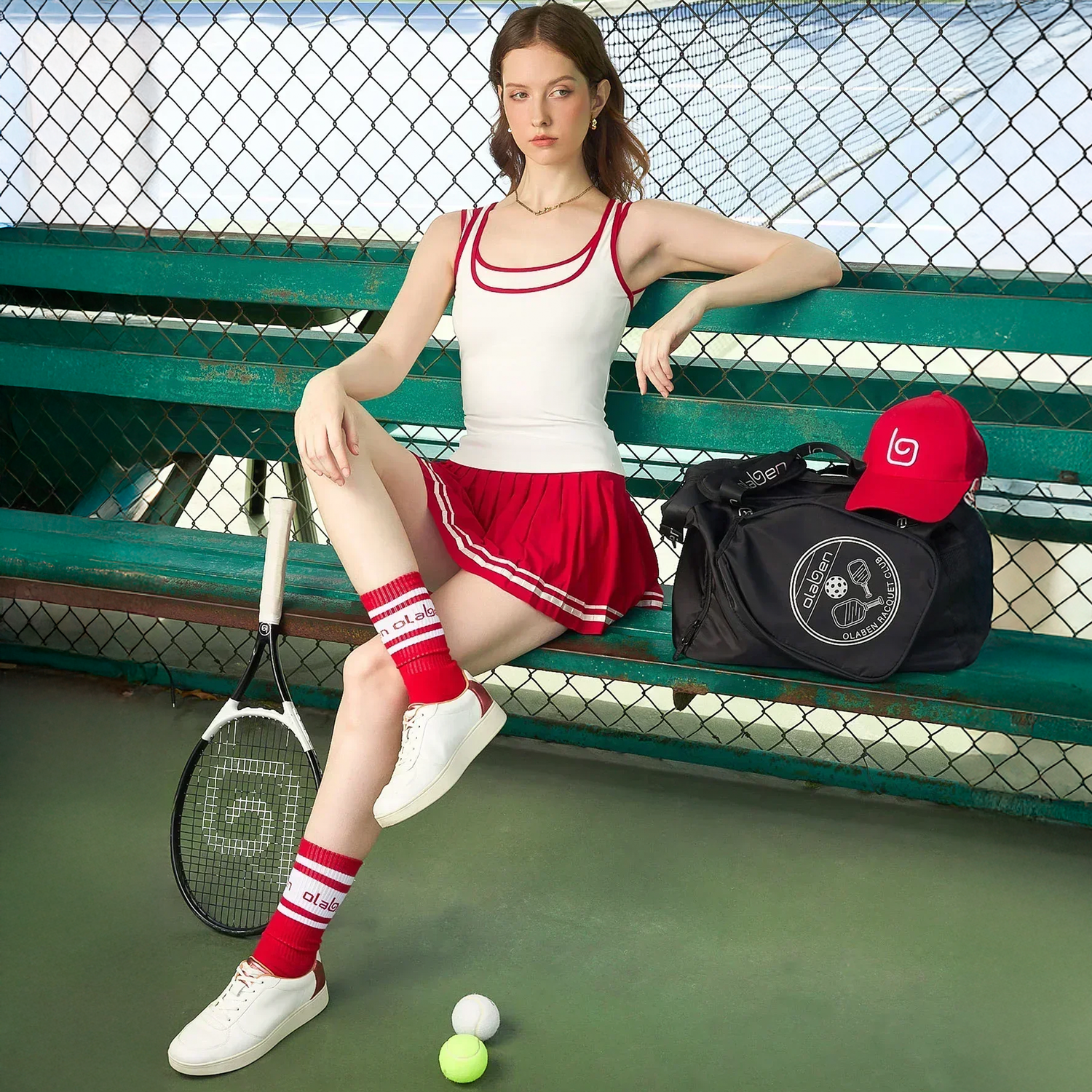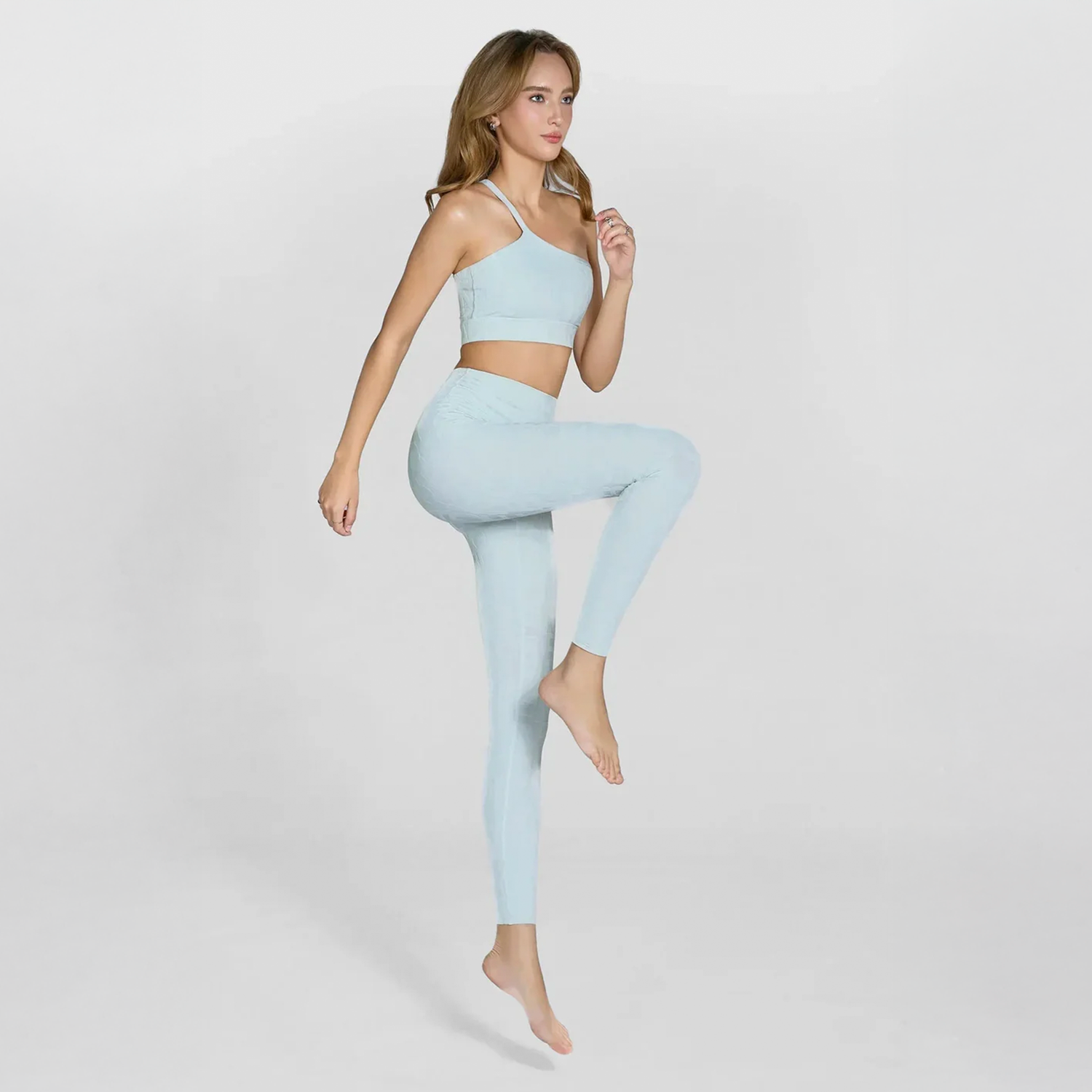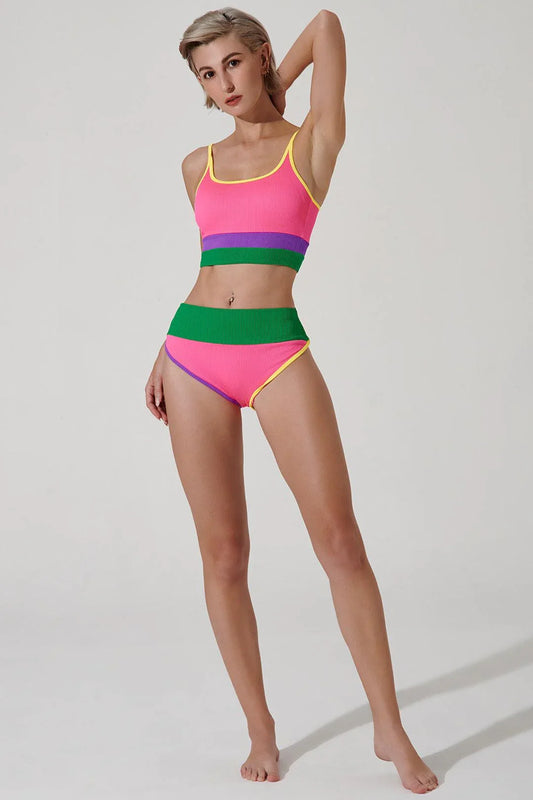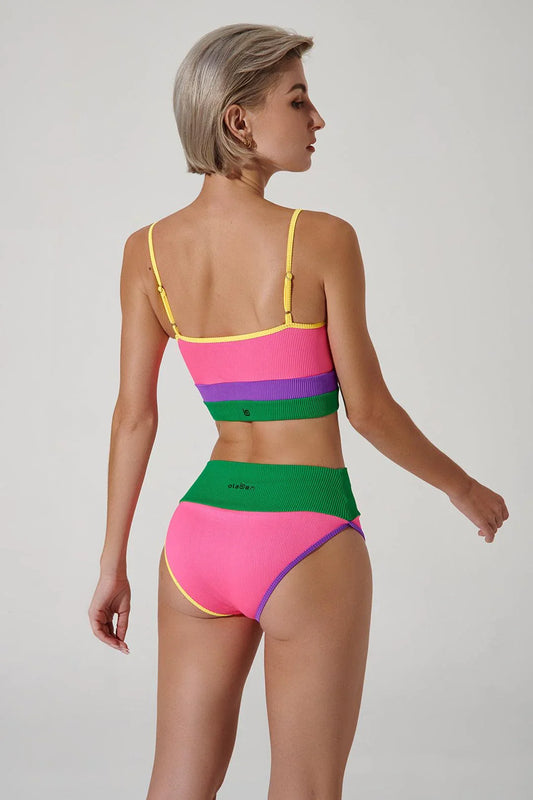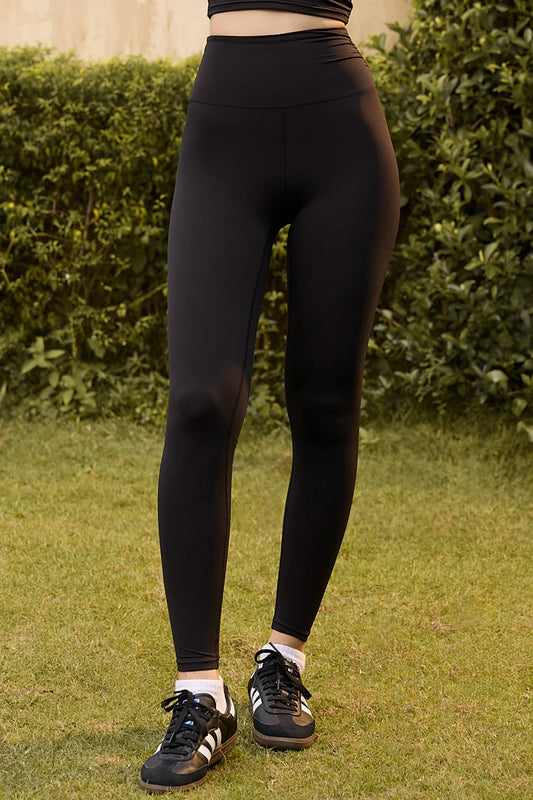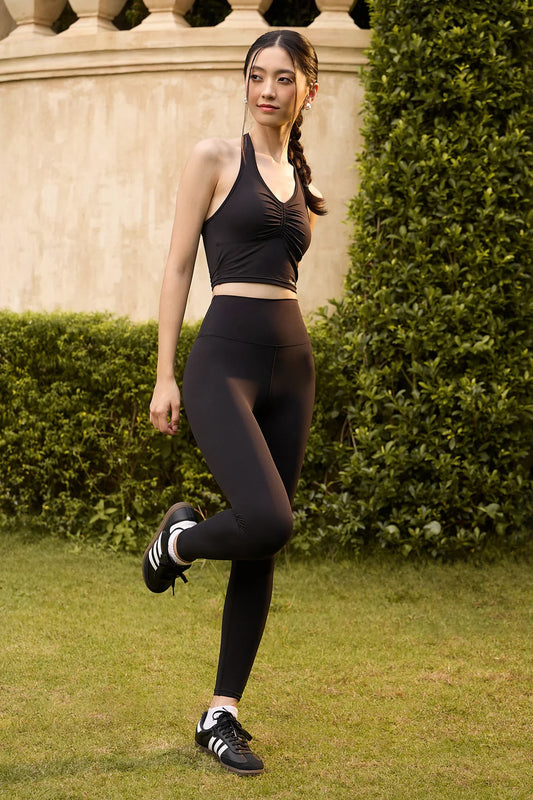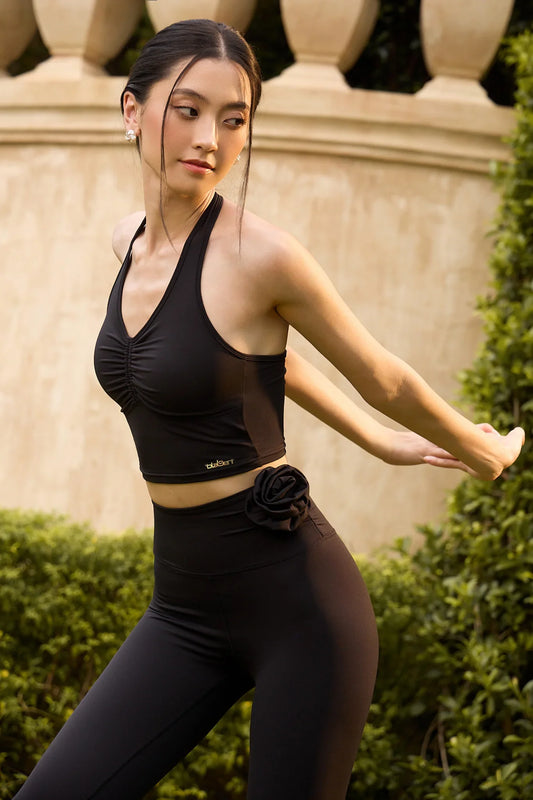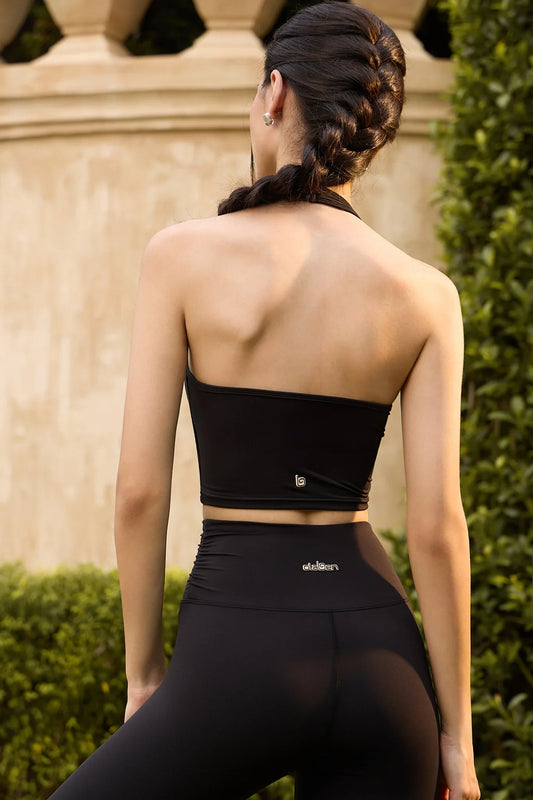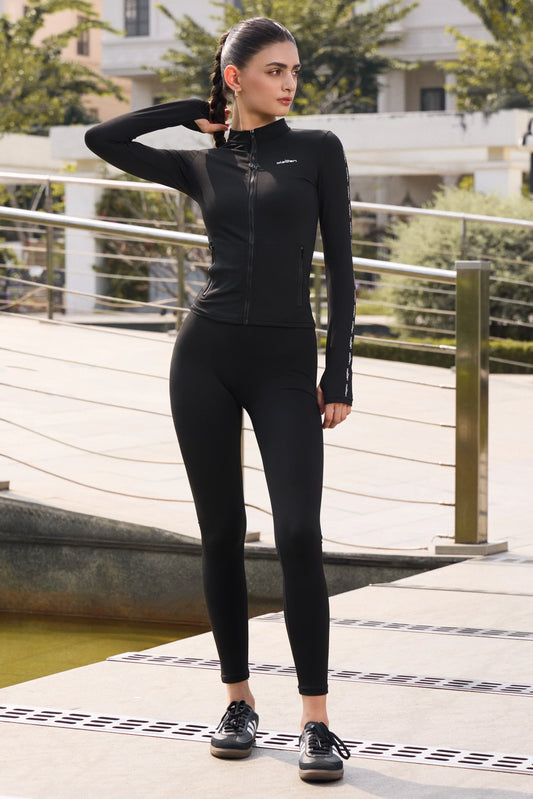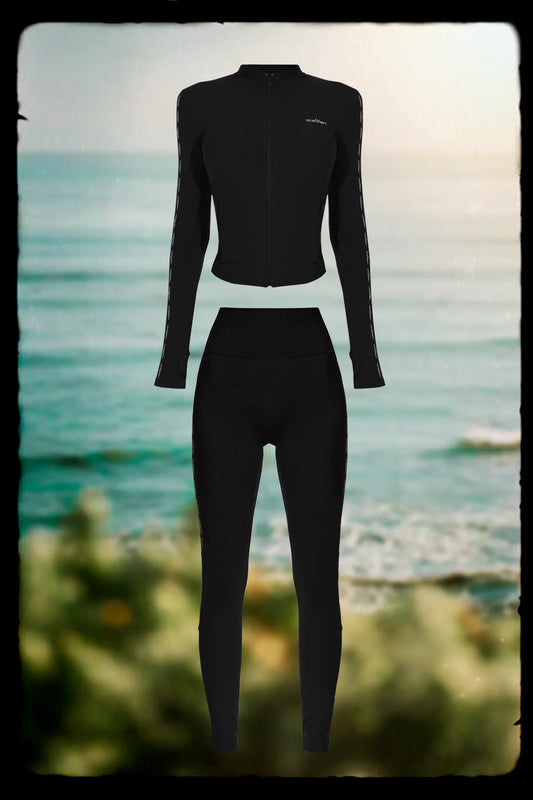Nếu bạn từng đến phòng gym vào một ngày nóng bức và nghĩ rằng, “Có lẽ mình sẽ bơi một chút cho mát sau buổi tập này,” thì bạn không phải là người duy nhất. Khi đồ tập (activewear) ngày càng linh hoạt và thời trang hơn, nhiều người tự hỏi: liệu đồ tập gym có thể dùng để bơi được không?
Câu trả lời ngắn gọn: đôi khi được — nhưng không phải lúc nào cũng phù hợp. Mặc dù đồ tập và đồ bơi có một số đặc điểm tương đồng, chúng được thiết kế cho những mục đích khác nhau. Trong bài viết này, Olaben sẽ giúp bạn hiểu rõ ưu nhược điểm và những điều cần lưu ý nếu muốn chọn đồ tập có thể sử dụng cả khi tập luyện lẫn xuống nước.
Phân Biệt Giữa Đồ Tập Gym và Đồ Bơi
Trước khi “lao xuống nước” thật sự, hãy cùng tìm hiểu sự khác biệt cơ bản giữa hai loại trang phục này.
Đồ Tập Gym
Đồ tập hay activewear được thiết kế để hỗ trợ vận động, linh hoạt và thoáng khí. Các chất liệu phổ biến bao gồm:
- Polyester và Spandex: co giãn và thoải mái
- Công nghệ thấm hút mồ hôi: giúp bạn luôn khô ráo khi tập luyện
- Vải lưới thoáng khí: tăng khả năng thông gió
Những loại vải này rất phù hợp cho chạy bộ, yoga, tập tạ và sinh hoạt hàng ngày — nhưng không thật sự lý tưởng cho môi trường nước mặn hoặc có clo.

Đồ Bơi
Đồ bơi được thiết kế đặc biệt cho môi trường ẩm ướt và có nhiệm vụ:
- Chống hư hại do clo và nước biển
- Nhanh khô sau khi bơi
- Giữ form dáng khi ướt
- Bảo vệ khỏi tia UV
Chất liệu đồ bơi thường bao gồm nylon, spandex (Lycra) hoặc polyester pha, được xử lý để tránh chảy xệ và phai màu.

Đồ Tập Gym Có Dùng Được Khi Bơi Không?
Bạn có thể mặc một số loại đồ tập khi xuống hồ hoặc biển — nhưng điều này còn phụ thuộc vào chất liệu vải và tần suất bạn bơi.
Khi Nào Có Thể Dùng
Một số loại activewear được làm từ vải nhanh khô, co nén, và chống clo — gần giống với chất liệu đồ bơi. Chúng bao gồm:
- Legging tập hot yoga (chịu nhiệt và mồ hôi tốt)
- Quần short nén hoặc quần đạp xe
- Bra thể thao có ít lớp đệm và may chắc chắn
- Áo kiểu rash-guard thiết kế cho tập ngoài trời hoặc lướt sóng
Nếu trên nhãn có ghi “moisture-wicking,” “quick-dry,” hoặc “chlorine-resistant,” thì bạn đã chọn đúng — các chất liệu này thường có thể chịu được việc ngâm nước thỉnh thoảng.
Khi Nào Nên Tránh
Đồ tập truyền thống làm từ cotton hoặc polyester chưa xử lý có xu hướng thấm nước nhanh, khiến vải trở nên nặng, chảy xệ và lâu khô. Điều này có thể:
- Tăng lực cản nước khi bơi
- Dễ gây trầy xước da khi ma sát
- Làm mất form chỉ sau vài lần bơi
- Khiến vải nhanh hỏng do clo hoặc muối
Vì vậy, dù đồ tập có thể trông giống đồ bơi, hiệu suất thực tế lại không tương đương.
Lợi Ích Khi Dùng Đồ Tập Gym Để Bơi
Nếu bạn chọn đúng loại, đồ tập gym có thể mang lại nhiều lợi thế khi sử dụng dưới nước:
- Tính linh hoạt: Lý tưởng cho những buổi “gym-to-swim” như tập thể dục trên bãi biển hoặc bơi sau khi chạy — không cần mang thêm đồ thay.
- Thoải mái và ôm dáng: Quần legging nén và bra thể thao mang lại sự hỗ trợ vững chắc và linh hoạt, tương tự như đồ bơi.
- Che phủ và tự tin: Phù hợp với những ai muốn kín đáo hơn bikini truyền thống — legging dài hoặc áo racerback là lựa chọn vừa thời trang vừa thoải mái.
- Bảo vệ da khỏi nắng: Nhiều loại vải thể thao cao cấp có khả năng chống tia UV với chỉ số UPF 50+, rất lý tưởng cho các hoạt động ngoài trời như bơi, chèo SUP hoặc tập ven biển.

Hạn Chế Khi Dùng Đồ Tập Gym Để Bơi
Dù tiện lợi, không phải tất cả đồ tập đều phù hợp cho môi trường nước. Dưới đây là một số nhược điểm cần lưu ý:
- Giữ nước: Hầu hết vải đồ tập dễ thấm nước, khiến trang phục nặng và khó chịu khi ướt.
- Dễ hư hỏng: Clo và nước mặn có thể phá hủy sợi tổng hợp, làm giãn, phai màu hoặc giảm độ bền của vải.
- Trầy da và kích ứng: Đường may hoặc chất liệu ổn khi tập gym có thể gây rát da khi tiếp xúc với nước.
- Tuổi thọ ngắn hơn: Ngay cả legging cao cấp cũng có thể bị giãn hoặc bay màu sau vài lần ngâm nước.
Suy Nghĩ Cuối Cùng: Có Nên Bơi Với Đồ Tập Gym?
Vậy, đồ tập gym có thể dùng để bơi không? Có — nếu chúng được làm từ vải nhanh khô, ôm sát, và chống clo.
Tuy nhiên, nếu bạn bơi thường xuyên hoặc tập luyện nặng dưới nước, đồ bơi chuyên dụng vẫn là khoản đầu tư đáng giá hơn để đảm bảo độ bền, sự thoải mái và hiệu suất.
Nếu bạn yêu thích các hoạt động kết hợp như bootcamp bãi biển, paddleboard, hay bơi thư giãn sau khi chạy, hãy tìm đồ thể thao đa năng (multi-sport activewear) được thiết kế cho cả đất liền và dưới nước. Đó chính là sự kết hợp hoàn hảo giữa công năng và phong cách.

